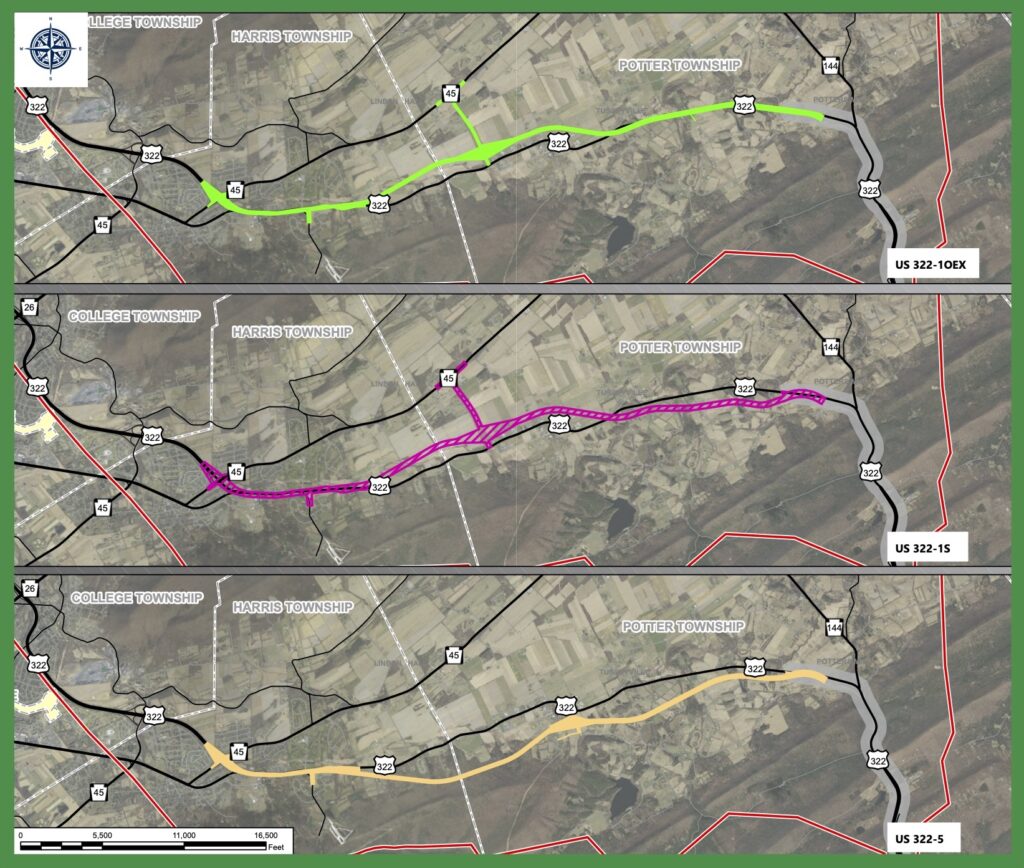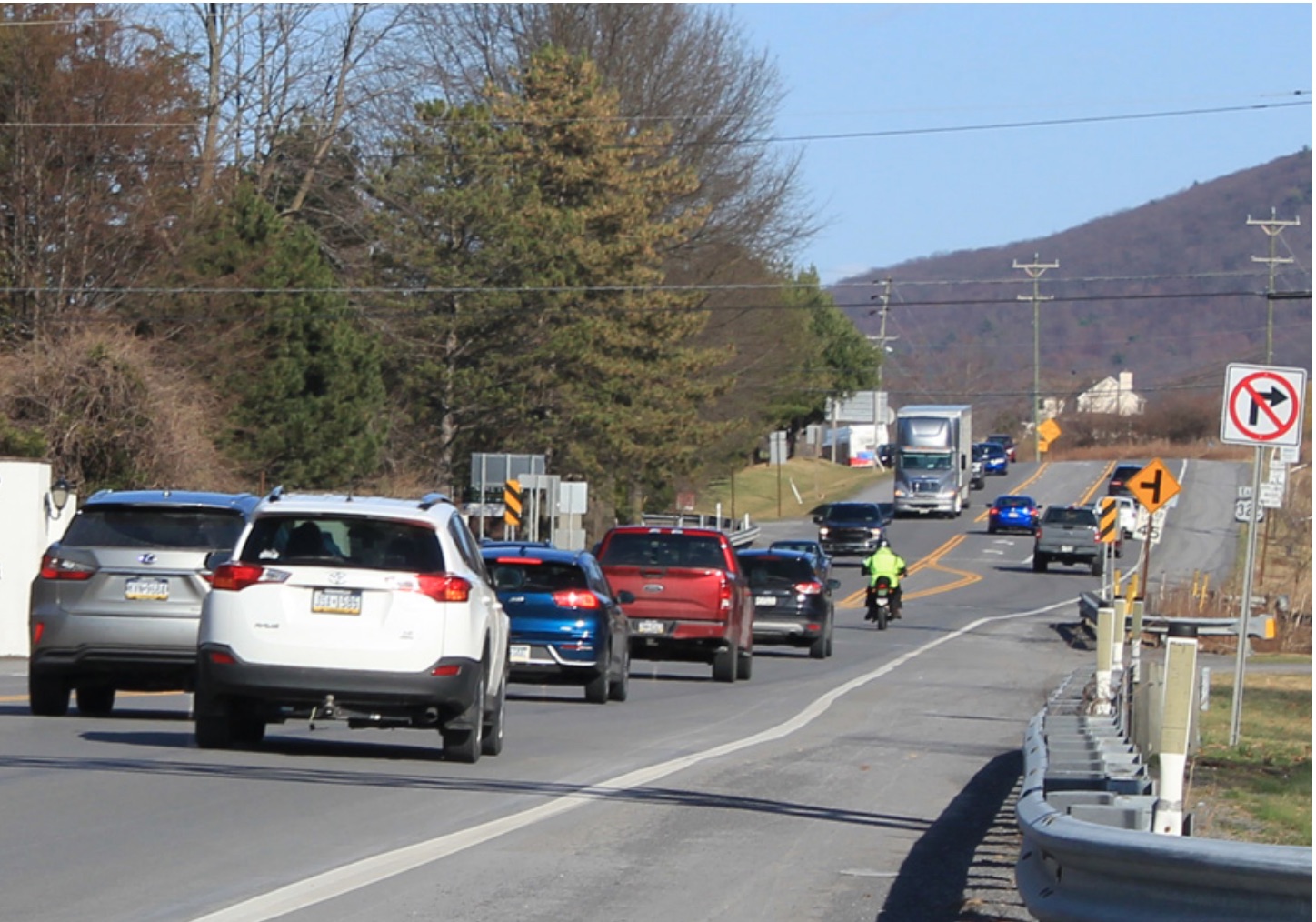A major highway project in southern Centre County is moving to the second phase of development, the state Pennsylvania Department of Transportation wrote in a news release.
PennDOT has requested that the Federal Highway Administration (FHWA) publish a notice of intent to prepare an Environmental Impact Statement for the State College Area Connector. The notice initiates the National Environmental Policy Act (NEPA) phase of project development, which according to PennDOT will include “conducting detailed field investigations, traffic analysis and refining engineering alternatives.”
The design team is currently performing field investigations, which includes experts conducting agricultural operation interviews, wetlands delineations, plant and wildlife species surveys and traffic counts.
Preliminary engineering and environmental studies represent the second of five phases for advancing a transportation projects. NEPA mandates that agencies “consider the potential environmental consequences of their proposals, document the analysis and make this information available to the public for comment prior to implementation,” according to the FHWA.
“The information collected helps FHWA and PennDOT make decisions about the specific improvements needed to improve the transportation network,” according to PennDOT’s SCAC website. “Assessments are also conducted to determine the benefits and impacts the alternatives would have on natural, cultural, and socio-economic environments.”
The notice of intent will be followed by a draft Environmental Impact Statement, final impact statement and a record of decision.
FHWA approval is required at the end of the preliminary engineering/environmental studies phase before advancing to the next phase of final engineering design.
The SCAC project is intended to improve the connection from the Seven Mountains area of Route 322 into the State College area and Interstates 99 and 80.
PennDOT completed the first phase with publication in August of the final Planning and Environmental Linkages (PEL) report for the SCAC study, which identified three “build alternatives” to move forward. Conducted with the FHWA, the study evaluated existing and projected transportation needs within a 70-square-mile area in the U.S. Route 322, state Route 45 and state route 144 corridor.
Each of the three identified options — US 322-1OEX, US 322-1S and US 322-5 — would connect U.S. 322 at the Mt. Nittany Expressway in Boalsburg and U.S. 322 at Potters Mills Gap, where a four-lane section of highway was completed in 2021. The link would essentially complete a four-lane highway from Harrisburg to State College and beyond.
All three would have service roads connecting to the local road network.
Each build alternative is about 8 miles long and is projected to divert nearly 53% of the total traffic and 73% of truck traffic from the local road network. Estimated costs range from $432 million and $517 million.
In January, PennDOT announced it was removing a connection to Route 45 included in two of the three options. The connection raised worries about safety issues, pollution, damage to residential areas and Route 45 being ill-equipped to handle increased traffic.
Instead, PennDOT is allocating up to $3 million to separately study and address safety concerns on Route 45 in Harris and Potter identified during the PEL study.

WHAT’S NEXT
PennDOT expects to host a public meeting this summer to present the “alternative refinement” from the PEL study.
“Following the meeting, the project team will address comments and develop additional project refinements, as appropriate,” according to PennDOT’s SCAC newsletter.
Refined alignments and a draft recommended preferred alignment will be presented at a second public meeting, tentatively expected to take place in early 2025. A public hearing will then be held after the release of the Draft Environmental Impact Statement for public and agency review.
The final Environmental Impact Statement and Record of Decision are anticipated in June 2026.
Pending approval by the FHWA, the project will then move into the final engineering design phase. That will be followed by right-of-way acquisition and, finally, construction, which is not expected to begin until 2028 and will take about five years to complete.



